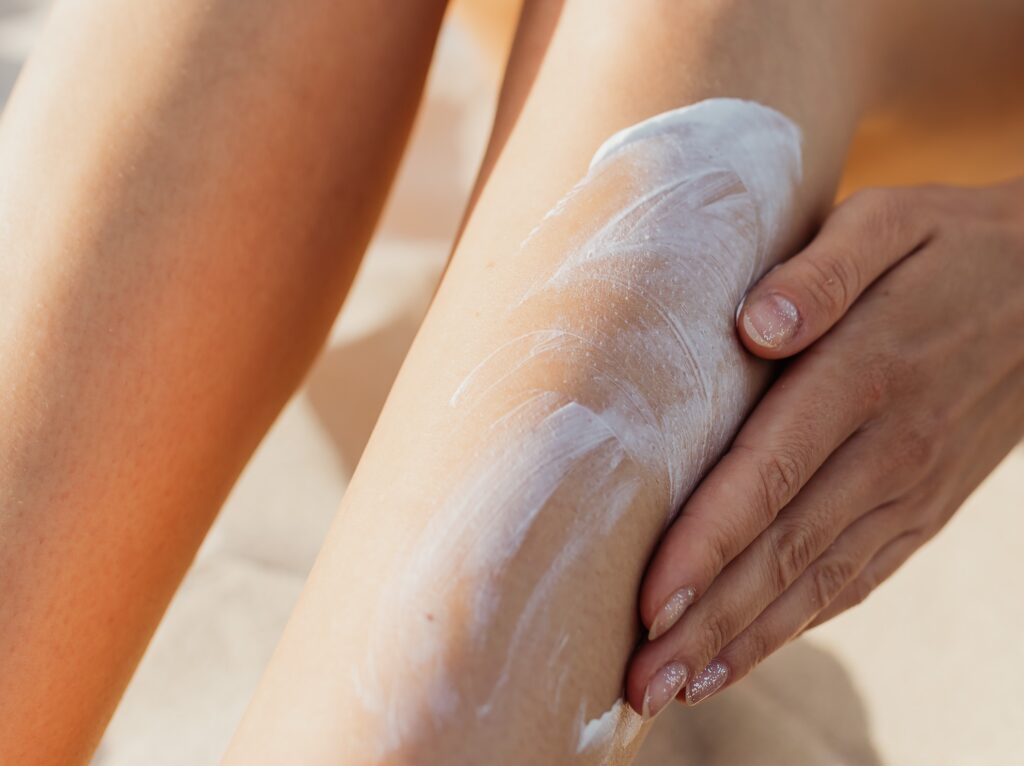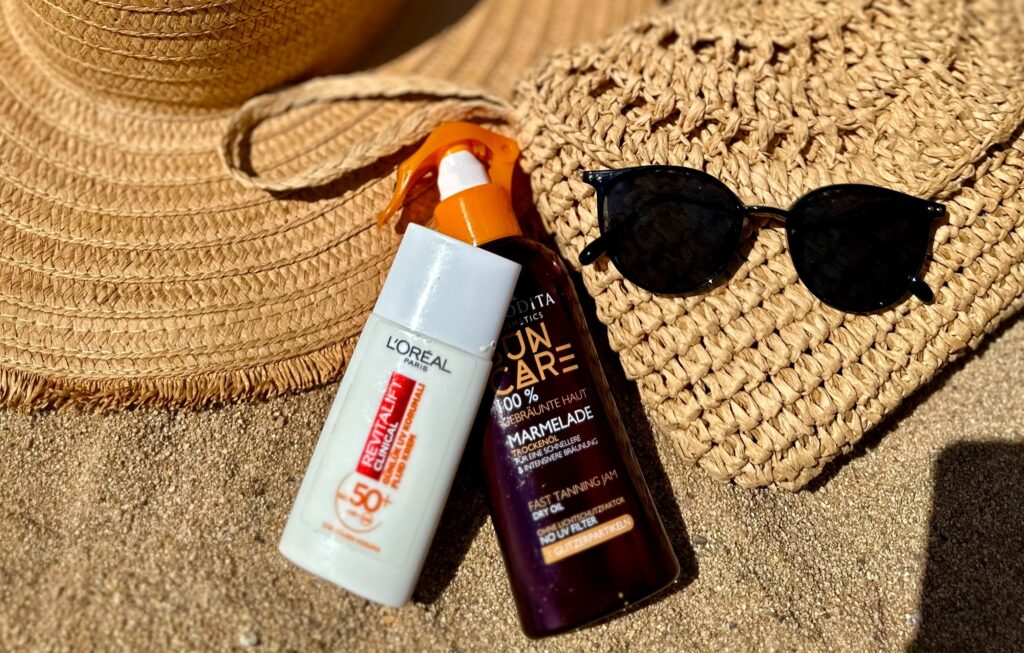How to tell if self tanner is expired? Curious if your self-tanner is still good to go or if it’s time to bid it farewell. We’ve got you covered. In this quick guide, we’ll show you some easy and foolproof ways to check if your self-tanning product has passed its prime. You’ll also learn how to extend the shelf life of your self-tanner and ensure that you always achieve that perfect sun-kissed glow. Whether you’re a self-tanning newbie or a seasoned pro, this guide is a must-read to avoid those dreaded self-tanning mishaps. No more guessing – let’s dive in and keep that sun-kissed glow on point!
Understanding the Shelf Life of Self Tanners
Self-tanners are a fantastic way to achieve a sun-kissed complexion without basking in harmful UV rays. However, like all beauty products, they do come with an expiration date. Understanding the shelf life of your self-tanner is crucial to ensure you’re getting the best results.
So, what determines how long your self-tanner lasts? It primarily depends on the product’s formulation, ingredients, and how it’s stored. Most self-tanning products come with a label that indicates the period of recommended use, usually ranging from 6 to 12 months. This label serves as a helpful guideline to keep your golden glow in tip-top shape.
When considering shelf life, it’s also essential to take into account how you store your self-tanner. Keeping it in a cool, dry place away from direct sunlight can help extend its usability. Extreme temperatures and exposure to light can accelerate the expiration process.
Now that you know the basics of self-tanner shelf life, let’s explore the telltale signs that your beloved tanning product might have seen better days.
Signs That Your Self Tanner May Have Expired
Whether you’re a seasoned self-tanner or just an occasional user, it’s essential to grasp the signs of a self-tanner that has seen better days. Knowing how to tell if self tanner is expired not only ensures better results but also safeguards your skin from potential harm.
Change in Color and Smell: One of the most apparent signs of an expired self-tanner is a change in color and smell. If your product has turned darker or has an unpleasant odor, it’s time to reconsider its use. Fresh self-tanners usually have a pleasant scent and maintain their original color.
Texture Alterations: An expired self-tanner may undergo changes in texture. If it’s become clumpy, separated, or has an uneven consistency, it’s best to discard it. Fresh self-tanners should have a smooth and uniform texture.
Patchy or Uneven Results: When a self-tanner reaches its expiration date, it often fails to deliver consistent and even results. If you notice streaks, blotches, or uneven tanning, this could be a sign that your product is no longer effective.
Skin Irritation: Using an expired self-tanner can cause skin irritation, itching, or rashes. If you experience any discomfort after application, discontinue use immediately.
Product Separation: Another indication of expiration is when the product separates into distinct layers. Shake your self-tanner gently before use, and if it doesn’t blend properly, it’s time to replace it.
By keeping an eye out for these telltale signs, you can ensure your self-tanning experience is always flawless and safe. Now that you know how to spot an expired self-tanner, you’ll be well-equipped to maintain that radiant, sun-kissed look all year round.
How to Check the Expiration Date on Your Self Tanner
Before diving into the world of self-tanning, it’s crucial to understand how to check the expiration date on your self-tanner. Using an expired product not only compromises your sun-kissed look but also can have undesirable consequences for your skin. Here’s a simple guide to ensure you’re using self-tanners at their best.
Most self-tanning products come with a recommended use period, typically ranging from 6 to 12 months. You can find this information on the product label. This expiration date serves as your first indicator of a self-tanner’s freshness. If it’s past this date, it’s best to consider a replacement.
Additionally, pay attention to changes in color, smell, texture, and the product’s performance. These signs, as discussed earlier, can provide further confirmation that your self-tanner is no longer suitable for use. Remember, your goal is to achieve a flawless, natural-looking tan, so ensuring your product is in good condition is vital.
Proper Storage and Handling of Self Tanners to Extend Their Shelf Life
Now that you know how to check the expiration date, it’s equally essential to understand how to store and handle your self-tanners properly. Taking these precautions can significantly extend their shelf life, ensuring you get the most out of your investment.
Store your self-tanner in a cool, dry place, away from direct sunlight and extreme temperatures. Exposure to heat and light can accelerate the expiration process. Keeping your self-tanner in a dark, cool cabinet or drawer is a simple way to preserve its quality.
Always ensure that the cap or lid of your self-tanner is tightly sealed. This helps prevent air and moisture from entering the container, which can degrade the product over time. Proper sealing maintains the formula’s integrity.
Before each use, give your self-tanner a gentle shake to ensure that any settled ingredients are evenly distributed. This step helps maintain the product’s consistency and effectiveness.
By adhering to these storage and handling guidelines, you’ll not only extend the shelf life of your self-tanner but also ensure that your tanning experience remains consistently satisfying and effective.

DIY Home Tests to tell If Your Self Tanner Is Expired
Curious about the condition of your self-tanner and how to tell if self tanner is expired without a chemistry degree? Don’t worry; you can easily perform some DIY home tests to make that determination. Let’s explore a few:
- The Color Test: Apply a small amount of self-tanner on a discreet area of your skin. If it develops into the desired shade within a reasonable timeframe, your product is likely still effective. If it doesn’t, it might be time for a replacement.
- The Smell Test: Take a whiff of your self-tanner. If it has a foul or unusual odor, it could be a sign of expiration. Fresh self-tanners should have a pleasant scent.
- The Texture Test: Check the texture of your self-tanner. If it’s clumpy, separated, or has an uneven consistency, it’s best to retire it. A good self-tanner should have a smooth and uniform texture.
By performing these simple DIY tests, you can confidently determine whether your self-tanner is still good to use and effectively tell if your self tanner is expired. Remember, the goal is to achieve a natural-looking, flawless tan, and using an expired product won’t get you there.
Common Myths and Misconceptions About Expired Self Tanners
There are several myths and misconceptions about expired self-tanners that can lead to confusion. Let’s debunk some of the most common ones:
Myth: Expired Self-Tanners Are Harmless: This is not true. Expired self-tanners can cause skin irritation, rashes, and other adverse reactions. It’s important to use a fresh product to avoid these issues.
Myth: The Date Doesn’t Matter: The recommended use-by date on self-tanners is there for a reason. Using the product beyond this date can result in poor performance and unsatisfactory results.
Myth: Storing in the Fridge Extends Shelf Life: While proper storage is essential, storing self-tanners in the fridge is not necessary. A cool, dark place is sufficient to preserve their quality.
Myth: Adding Lotion Can Revive Expired Tanners: Mixing an expired self-tanner with lotion won’t bring it back to life. The product’s active ingredients degrade over time, and no amount of mixing will change that.
Myth: All Self-Tanners Expire at the Same Rate: The shelf life of self-tanners can vary based on the formulation and ingredients. Always check the label for the recommended use period.
By dispelling these myths and understanding the signs to tell if self tanner is expired, you’ll make informed choices and ensure that your tanning experience remains enjoyable and safe.
Let me tell you What to Do If Your Self Tanner Has Expired
If you’ve discovered that your self-tanner has expired, don’t panic. Instead, there are several steps you can take to ensure you continue enjoying a radiant tan without compromising your skin’s health. Here’s what to do if you find yourself with an expired self-tanner:
Dispose of It Safely: The first step is to safely get rid of the expired self-tanner. Avoid pouring it down the drain, as it can harm the environment. Instead, check your local regulations for guidelines on disposing of beauty products.
Perform a Patch Test: Before trying a new self-tanner, especially if you had a reaction to the expired one, do a patch test on a small area of your skin. This ensures you don’t have any adverse reactions when applying it all over.
Choose a Fresh Self Tanner: Invest in a new, high-quality self-tanner with a longer shelf life. Make sure to check the expiration date on the label, so you won’t run into the same issue again.
Store Properly: Keep your new self-tanner in a cool, dry place, away from direct sunlight. Always ensure to securely close the cap to extend its shelf life.
Read User Reviews: Before purchasing a new self-tanner, consider reading user reviews and seeking recommendations from beauty experts. This helps you find a product that aligns with your needs.

Recommended Self Tanners with Longer Shelf Lives
If you’re in the market for a self-tanner with an extended shelf life, there are several products that fit the bill. These options have garnered positive reviews and have been praised for their longevity:
By selecting one of these self-tanners with longer shelf lives, you can be confident that you’ll have a reliable product that maintains its quality for an extended period.
Conclusion: How to tell if self tanner is expired?
First and foremost, when it comes to achieving the best results and maintaining healthy, glowing skin, there’s no substitute for using self-tanners that are well within their recommended shelf life. Here’s why:
For one, fresh self tanners work like a charm, ensuring you get the results you desire – a smooth, even, and entirely natural-looking tan. When you venture into the territory of expired self tanners, the outcome can be anything but pleasant. You may find yourself dealing with a patchy, streaky, or uneven tan that can be quite a disappointment.
But there’s more to this story than just looking good; it’s also about ensuring your skin’s well-being. Expired self tanners can be culprits when it comes to causing skin irritation or even those pesky rashes. Opting for fresh self tanners, on the other hand, is like providing a gentle caress to your skin, ensuring it remains radiant and free from any adverse effects.
So, in a nutshell, the verdict is clear: To sport the best results and maintain your skin’s health, the path of wisdom leads to using self tanners that are well within their recommended shelf life. Whether it’s adhering to the recommended storage guidelines, properly disposing of expired products, or selecting self tanners with longer shelf lives, it’s all about ensuring you can confidently flaunt a beautiful, long-lasting tan that elevates your self-assurance.

